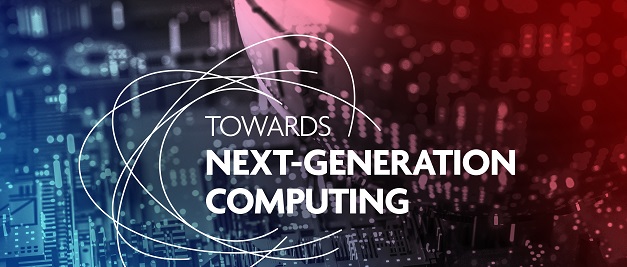MIT researchers and colleagues have discovered an important—and unexpected—electronic property of Graphene, a material discovered only about 17 years ago that continues to surprise scientists with its interesting physics. The work, which involves structures composed of atomically thin layers of materials that are also biocompatible, could usher in new, faster information-processing paradigms. One potential application is in neuromorphic computing, which aims to replicate the neuronal cells in the body responsible for everything from behavior to memories. The work also introduces new physics that the researchers are excited to explore.
“Graphene-based heterostructures continue to produce fascinating surprises. Our observation of unconventional ferroelectricity in this simple and ultra-thin system challenges many of the prevailing assumptions about ferroelectric systems and it may pave the way for an entire generation of new ferroelectrics materials,” says Pablo Jarillo-Herrero, the Cecil and Ida Green Professor of Physics at MIT and leader of the work, which involved a collaboration with five other MIT faculty from three departments.
A New Property
Graphene is composed of a single layer of carbon atoms arranged in hexagons resembling a honeycomb structure. Since the material’s discovery, scientists have shown that different configurations of graphene layers can give rise to a variety of important properties. Graphene-based structures can be either superconductor, which conduct electricity without resistance, or insulators, which prevent the movement of electricity. They have even been found to display magnetism.
In the current work, which was reported last December in Nature, the MIT researchers and colleagues show that bilayer graphene can also be ferroelectric. This means that positive and negative charges in the material can spontaneously separate into different layers.
In most materials, opposite charges are attracted to each other; they want to combine. Only the application of an electric field will force them to opposite sides, or poles. In a ferroelectric material, no external electric field is necessary to keep the charges apart, giving rise to a spontaneous polarization. However, the application of an external electric field does have an effect: an electric field of opposite direction will cause the charges to switch sides and reverse the polarization.
For all of these reasons, ferroelectric materials are used in a variety of electronic systems, from medical ultrasounds to radio frequency identification (RFID) cards.
Conventional ferroelectrics, however, are insulators. The MIT-led team’s ferroelectric based on graphene operates through a completely different mechanism—different physics—that allows it to conduct electricity. And that opens up myriad additional applications. “What we’ve found here is a new type of ferroelectric material,” says Zhiren (Isaac) Zheng, an MIT graduate student in physics and first author of the Nature paper.
“This work is the first demonstration that reports pure electronic ferroelectricity, which exhibits charge polarization without ionic motion in the underlying lattice. This surprising discovery will surely invite further studies that can reveal more exciting emergent phenomena and provide an opportunity to utilize them for ultrafast memory applications.”
The researchers aim to continue the work by not only demonstrating the new material’s potential for a variety of applications but also developing a better understanding of its physics. “There are still many mysteries that we don’t fully understand and that are fundamentally very intriguing,”








